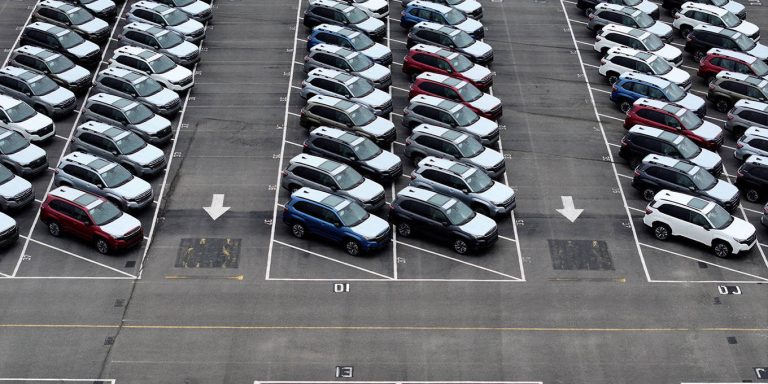

Credit card debt and delinquency rates increased for many Americans. (iStock)
Credit card balances increased to $1.03 trillion in the second quarter of 2023, according to the latest report by the Federal Reserve Bank of New York. That marked a $45 billion spike from the previous quarter. Credit card debt’s historic rise also represented the largest increase among all debt types analyzed by the NY Fed.
“Compared to other debt categories this quarter, credit card balances saw the most pronounced worsening in performance, following a period of extraordinarily low delinquency rates during the pandemic,” The NY Fed said in its report.
And as credit card debt rose for many Americans, so did their transitioning into credit card payment delinquency.
In fact, the share of credit card debt that transitioned into delinquency increased by 0.7 percentage points. However, credit card delinquency rates seem to be stabilizing along their pre-pandemic levels, according to Joelle Scally, regional economic principal within the Household and Public Policy Research Division at the New York Fed.
Still, many Americans continue to rely on credit cards amidst stubborn inflation, rising interest rates, bank failures and other economic turmoil.
“Credit cards are the most prevalent form of household debt and continue to become even more widespread,” The NY Fed said in its report.
There are 70 million more credit card accounts open now than in 2019, the NY Fed reported in a blog post. And 69% of Americans had a credit card in the second quarter of 2023, up from 65% in December 2019 and 59% in December 2013.
In addition, total household debt reached $17.06 trillion in the second quarter of 2023, up by $16 billion in the previous quarter.
If you’re struggling with high-interest debt in a troubling economy, you could consider paying it off with a personal loan at a lower interest rate. Visit Credible to compare your options without affecting your credit score.
SOME AMERICANS DROWNING IN CREDIT CARD DEBT FOLLOWING THE COVID-19 PANDEMIC: SURVEY
Fed’s interest rate hikes could impact credit card debt
Since 2022, the Federal Reserve has raised interest rates 11 times as it attempts to bring down inflation to its 2% target range.
During its last meeting in July, the Fed increased interest rates by 25 basis points, bringing the federal funds rate to a targeted range of 5.25% to 5.5% – its highest level in 22 years. Any change to the federal funds rate could impact interest rates on credit cards, auto loans and other consumer products.
And it’s uncertain whether the Fed would pause interest rate hikes again, even though inflation has been cooling these past few months.
Inflation slowed to 3% in June, according to the latest consumer price index (CPI) report. That marked its lowest level in more than two years. But these trends may not be enough for the Fed to change its course soon.
“Don’t expect the Fed to stop raising rates,” Morning Consult Chief Economist John Leer said in a statement. “The Fed cares primarily about the trend in core PCE inflation, which has been persistently elevated for the past six months. One month of encouraging CPI data isn’t enough for the Fed to make a dovish pivot, particularly as it seeks to maintain credibility with financial markets.”
And in a press conference, Federal Reserve Chairman Jerome Powell expressed that future interest rate hikes are not off the table.
“We have covered a lot of ground, and the full effects of our tightening have yet to be felt,” Powell said. “Looking ahead, we will continue to take a data-dependent approach in determining the extent of additional policy firming that may be appropriate.
“We remain committed to bringing inflation back to our 2 percent goal and to keeping longer-term inflation expectations well anchored,” Powell continued. “Reducing inflation is likely to require a period of below-trend growth and some softening of labor market conditions.”
The Fed is set to meet again in September to determine future monetary policy.
If you’re worried about high-interest debt, you could consider paying it off with a personal loan at a lower rate to reduce your monthly payments. Visit Credible to get your personalized rate in minutes.
MORE THAN HALF OF GEN XERS STOPPED SAVING FOR RETIREMENT, HERE’S WHY: SURVEY
How to pay off high-interest debt
Consumers who are struggling with high-interest debt could consider various options like personal loans and balance transfer cards.
Personal loans are designed to help people pay down high-interest debt at a lower interest rate and through a series of consistent monthly payments called installments. A personal loan can be used to cover liabilities such as credit card debt and medical bills, as well as fund large purchases like a vehicle or a boat. Depending on the terms of the lender, consumers may have up to 12 years to pay off their personal loans.
Those who are trying to specifically pay off high-interest credit card debt could also consider balance transfer cards. This option is designed to transfer outstanding credit card balances into a new card called a balance transfer credit card. Balance transfer cards often have 0% APR periods that can last up to 12 months. So consumers could have that period to pay off their credit card balances at a 0% interest rate.
But it’s important to pay off the total balance within that time frame as the interest rate on the balance transfer could increase after that date, thereby increasing monthly payments.
If you’re interested in paying off high-interest debt with a personal loan, you could visit the Credible marketplace to learn more about your options and speak with an expert to get your questions answered.
HEALTHCARE COSTS COULD EXCEED $150,000 FOR RETIRED MEDICARE RECIPIENTS: FIDELITY
Have a finance-related question, but don’t know who to ask? Email The Credible Money Expert at moneyexpert@credible.com and your question might be answered by Credible in our Money Expert column.






